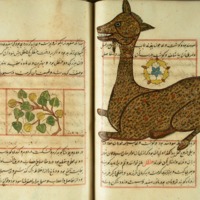Sara Nur Yildiz
Middle East Technical University, History, Faculty Member
- PhD, University of Chicagoedit
This collection of thirteen essays addresses the intellectual, religious and literary culture of medieval Anatolia and the early Ottoman realm of the fourteenth and fifteenth centuries, focusing on texts written in Arabic, Persian and Old... more
This collection of thirteen essays addresses the intellectual, religious and literary culture of medieval Anatolia and the early Ottoman realm of the fourteenth and fifteenth centuries, focusing on texts written in Arabic, Persian and Old Anatolian Turkish as case studies. The introductory chapter surveys the beylik (Turkish principalities) period and the emergence of Anatolian Turkish as a vernacular literary language in the fourteenth century. The subsequent chapters present a wide range of topics, ranging from proto-Bektashi poetry and the Vefa'iyye to the emergence of the Ottoman scholarly system. These scholarly essays aim not only to move beyond Köprülü’s nationalist paradigm of Anatolian cultural life with new approaches, but also to provide background for further research and point to new avenues of inquiry in this relatively neglected field of study.
The volume may be purchased through the Ergon Publisher's website: http://www.ergon-verlag.de/en/orientalistik/istanbuler-texte-und-studien/band-34.php
The volume may be purchased through the Ergon Publisher's website: http://www.ergon-verlag.de/en/orientalistik/istanbuler-texte-und-studien/band-34.php
Research Interests: Ottoman Literature, Old Anatolian Turkish, Medieval vernacular translations (volgarizzamenti), Islamic Manuscripts, Medieval Anatolia (Seljuk, Mongol), and 18 moreLate Medieval Anatolia, 15th and 16th Century Ottoman Intellectual History, Kütahya, Ayasuluk, Kaygusuz Abdal, Alevism and Bektashism Literature, Ottoman Anatolia (1200-1500) Comparative empire, Aqquyunlu, Anadolu Beylikleri, Ottoman Intellectual History, Vefaiye Tarikatı, Islamic Written Sources (Manuscripts, Ottoman Ulema, Early Ottoman Literature and Language, Anatolian Sufism, Beylikler devri, Social History of Medieval Anatolia (under Byzantine, Seljuq, Mongol, early Ottoman domination), and Medieval Anatolian Intellectual History
I examine Devletoğlu Yūsuf Balıḳesrī’s Hanafi law manual, a paraphrase of the Arabic Wiqāya composed in rhymed couplets in Anatolian Turkish and dedicated to the Ottoman sultan Murad II (d. 855/1451). I discuss how the author shapes his... more
I examine Devletoğlu Yūsuf Balıḳesrī’s Hanafi law manual, a paraphrase of the Arabic Wiqāya composed in rhymed couplets in Anatolian Turkish and dedicated to the Ottoman sultan Murad II (d. 855/1451). I discuss how the author shapes his text for an Ottoman audience and justifies the use of verse as well as the newly emerging literary language of Anatolian Turkish for the composition of a religious text. Not only does the author refer to the benefits of transmitting religious knowledge in the vernacular, but he also justifies its use for Islamic learning by citing Hanafi-approved Persian practices of religious devotion as well as the rhetorical theories of the Arabic grammarian, ʿAbd al-Qāhir al-Jurjānī (d. ca. 471-474/1078-1081)
This article surveys the Anatolian physician and scholar Hacı Paşa’s (d. ca. 1425) career and written corpus of twelve works (ten in Arabic and the remaining two in Old Anatolian Turkish), contextualizing this textual production in its... more
This article surveys the Anatolian physician and scholar Hacı Paşa’s (d. ca. 1425) career and written corpus of twelve works (ten in Arabic and the remaining two in Old Anatolian Turkish), contextualizing this textual production in its broader intellectual trends and the intraregional scholarly networks. After completing his religious and medical studies in Cairo and working as physician at the Cairene Manṣūriyya hospital, Hacı Paşa resettled in western Anatolia in 1370 where he served the Aydınid ruler, Fakhr al-Dīn ʿİsā Bey (r. ca. 1360-ca. 1389-1391) as qadi, madrasa teacher, and court physician. The primary form of Hacı Paşa’s textual production was commentary writing: although the majority of his works were medical, Hacı Paşa also composed commentaries on kalām and logic. This article demonstrates how, by participation in textual communities clustering around certain authoritative texts through commentary writing, Hacı Paşa was linked to a vast interregional network of scholars, and in particular, to Cairene-centered textual communities promoting the combination of rational and religious sciences as it reached its culminating point in the late thirteenth and early fourteenth-century in Ilkhanate Iran. Hacı Paşa subsequently disseminated these intellectual trends in western Anatolia through teaching and writing while in the service of the Aydınid ruler.
Research Interests:
Baiju’s career encapsulates the tensions arising between the military and the administration during the rapid expansion of the Mongol imperial domains. The ad hoc predatory behavior of military commanders often clashed with the aims of... more
Baiju’s career encapsulates the tensions arising between the military and the administration during the rapid expansion of the Mongol imperial domains. The ad hoc predatory behavior of military commanders often clashed with the aims of Mongol civilian administrators in charge of implementing bureaucratic rule over subjugated sedentary populations and restoring sedentary agricultural lands and cities following the initial trauma of conquest often through violent means. Baiju was the rapacious and implacable Mongol commander par excellence, hated and feared by local populations, Christian or Muslim, implementing the Mongol military strategy of terror as an effective way to subjugate sedentary populations. Baiju is primarily known as the conqueror of Anatolia. In 1243 he rendered the Seljuks of Anatolia, the Cilician kingdom of Armenia, and Mosul under the rule of Sultan Badr al-Dīn Luʾluʾ (r. 1233-59) as tributary states, and in 1256 he placed Seljuk Anatolia under Hülegü’s direct authority with a second military campaign. In addition to being the twice-conqueror of Anatolia, Baiju likewise conducted raids and campaigns throughout neighboring regions, going as far as Baghdad. Together with his superior, the first Mongol commander-in-chief of the western territories, Chormaqan, Baiju was largely responsible for imposing Mongol rule in the western regions of the empire.
